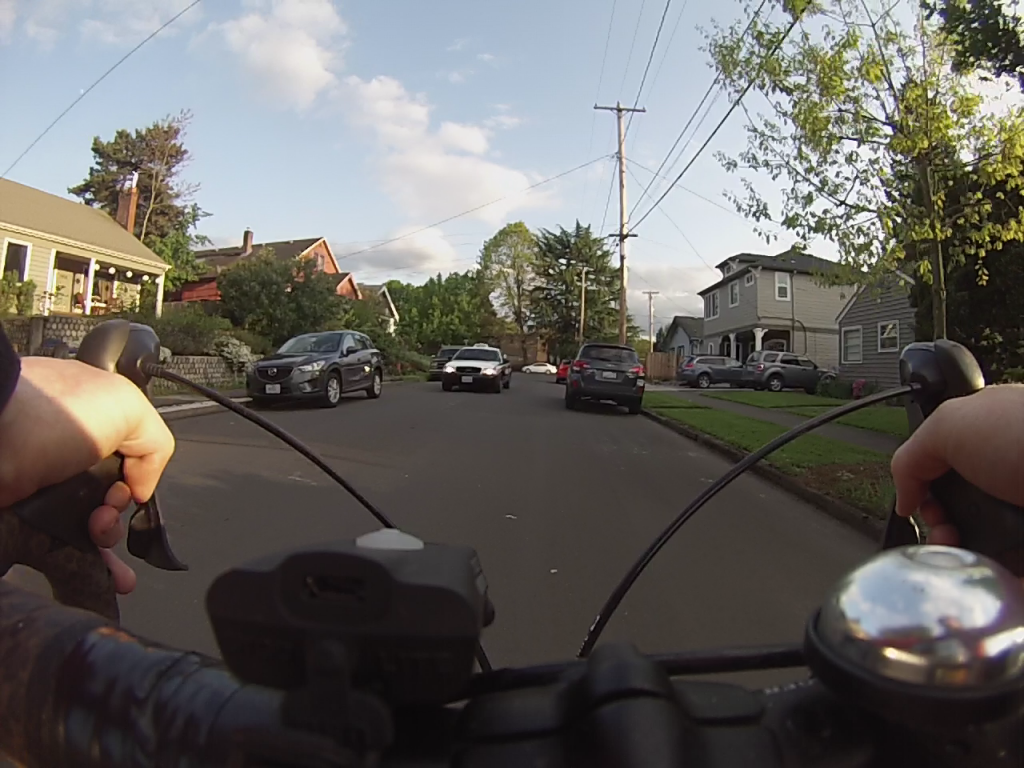Earlier this year Salem cyclist David Fox had an encounter with an irate motorist on State Street, a three lane one way street that runs by Oregon’s State Capitol. Despite riding to the right on the street, the motorist became angry at him and told David “if I was impeding traffic, then I had to pull to the side. But I told him he had plenty of room to go around. The last thing he said was: ‘I hope you are killed by a car.’” David’s encounter led him to erect his own signs along State Street to educate road users about the law. He removed the signs shortly after putting them up.
Two of Oregon’s Rules of the Road that bicyclists are frequently cited for violating, ORS 814.430 Improper use of lanes and ORS 811.130 Impeding traffic, include references to “impeding traffic.” The term “impeding traffic” is not defined anywhere in the statutory vehicle code, and the definition of the term is not as simple as a lot of motor vehicle driver’s believe it is, including the driver that threatened David.
In 2005 the Oregon Court of Appeals defined what impeding traffic meant in State v. Tiffin, 202 Or App 199 (2005). In the case the defendant, Jacob Tiffin, was followed by two police officers on a two lane road in Josephine County with a posted speed limit of 40MPH. Tiffin was driving between 28 and 30 miles per hour. Despite there being several turnouts on the road, Tiffin continued driving with the police officers following him until he was eventually pulled over for violating ORS 811.130 Impeding traffic for driving under the speed limit. Tiffin was charged and convicted of driving under the influence of intoxicants. Tiffin appealed his conviction on the grounds that the police officers lacked probable cause to believe he had violated ORS 811.130 Impeding traffic because the officers could have safely and reasonably passed him but chose not to.
The court agreed with Tiffin and in doing so defined what it means to impede (or, rather, not impede) traffic: “here the officers were forced to slow down for only a fraction of a mile before they had the opportunity to pass defendant… [and] where the speed (of Tiffin) was not significantly below the speed limit, there were no other cars on the road, and if the officer’s vehicle was blocked at all, it was for a very short distance, if cannot be said that [Tiffin] violated ORS 811.130 by blocking or impeding the normal and reasonable flow of traffic.” The officers in Tiffin “were therefore not impeded or blocked – they could have safely and lawfully passed him but chose not to…there is no evidence that, before the officers decided to remain behind his vehicle and follow him, that he impeded ‘reasonable and normal’ traffic movement.”
How this case translates into Oregon bicycle law is that if a car driver behind a cyclist has the ability to safely and reasonably pass the bicyclist moving more slowly, the car driver is not “impeded”, even if they have to wait a fraction of a mile to do so. The driver who threatened David had ample ability to pass him by moving over into any of the other unoccupied lanes of State Street, but chose not to do so.


